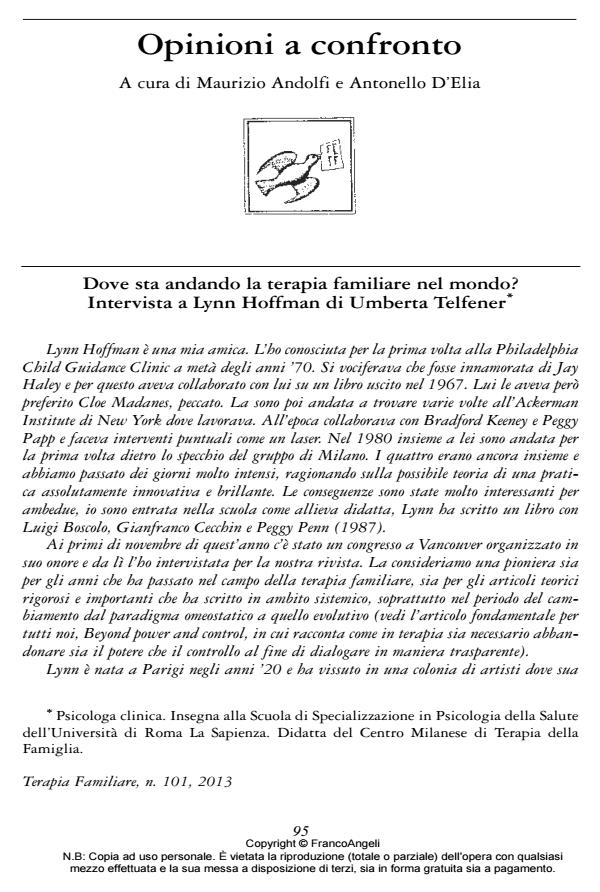Dove sta andando la terapia familiare nel mondo? Intervista a Lynn Hoffman di Umberta Telfener
Titolo Rivista TERAPIA FAMILIARE
Autori/Curatori Umberta Telfener
Anno di pubblicazione 2013 Fascicolo 2013/101
Lingua Italiano Numero pagine 6 P. 95-100 Dimensione file 100 KB
DOI 10.3280/TF2013-101005
Il DOI è il codice a barre della proprietà intellettuale: per saperne di più
clicca qui
Qui sotto puoi vedere in anteprima la prima pagina di questo articolo.
Se questo articolo ti interessa, lo puoi acquistare (e scaricare in formato pdf) seguendo le facili indicazioni per acquistare il download credit. Acquista Download Credits per scaricare questo Articolo in formato PDF

FrancoAngeli è membro della Publishers International Linking Association, Inc (PILA)associazione indipendente e non profit per facilitare (attraverso i servizi tecnologici implementati da CrossRef.org) l’accesso degli studiosi ai contenuti digitali nelle pubblicazioni professionali e scientifiche
Umberta Telfener, Dove sta andando la terapia familiare nel mondo? Intervista a Lynn Hoffman di Umberta Telfener in "TERAPIA FAMILIARE" 101/2013, pp 95-100, DOI: 10.3280/TF2013-101005